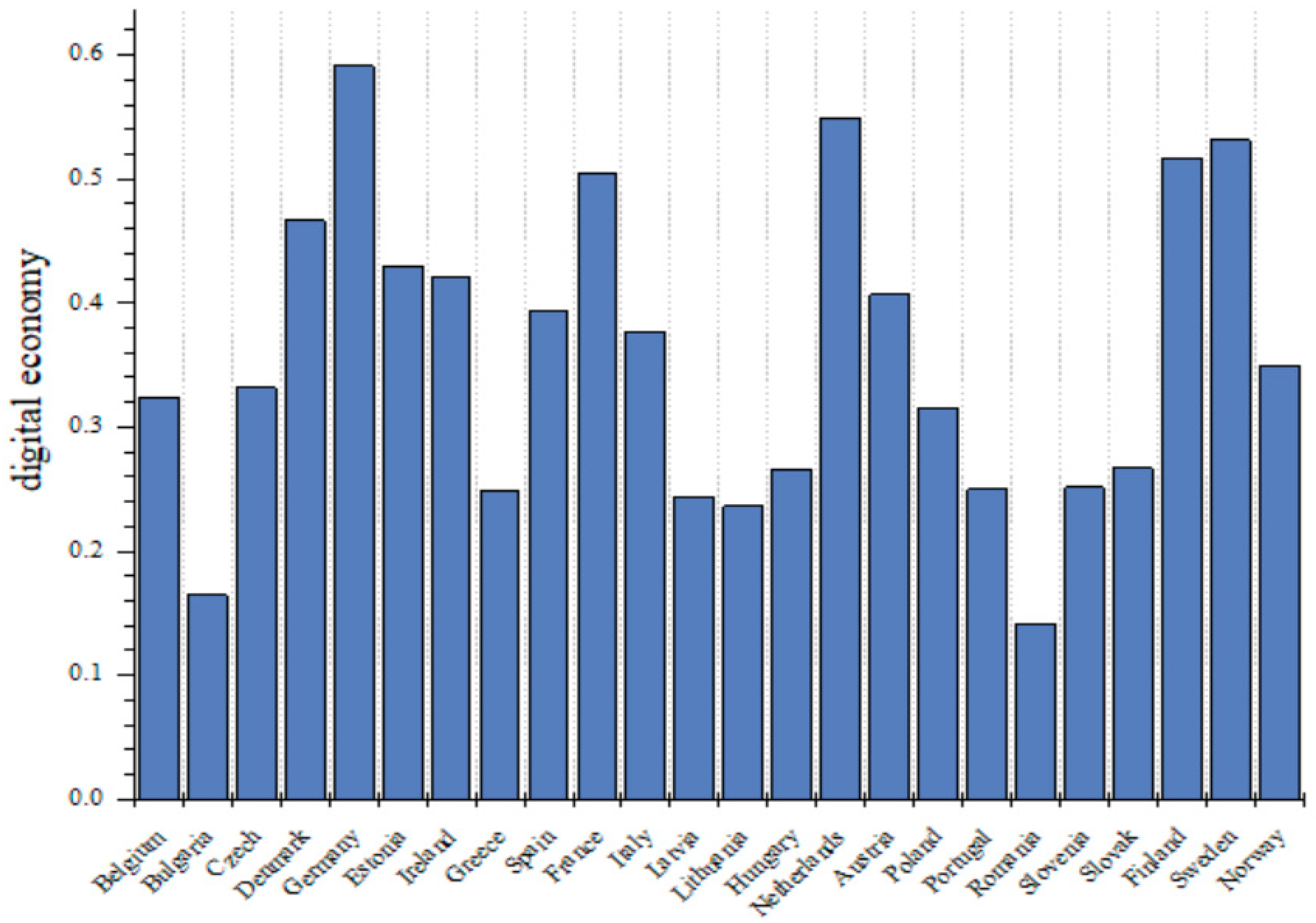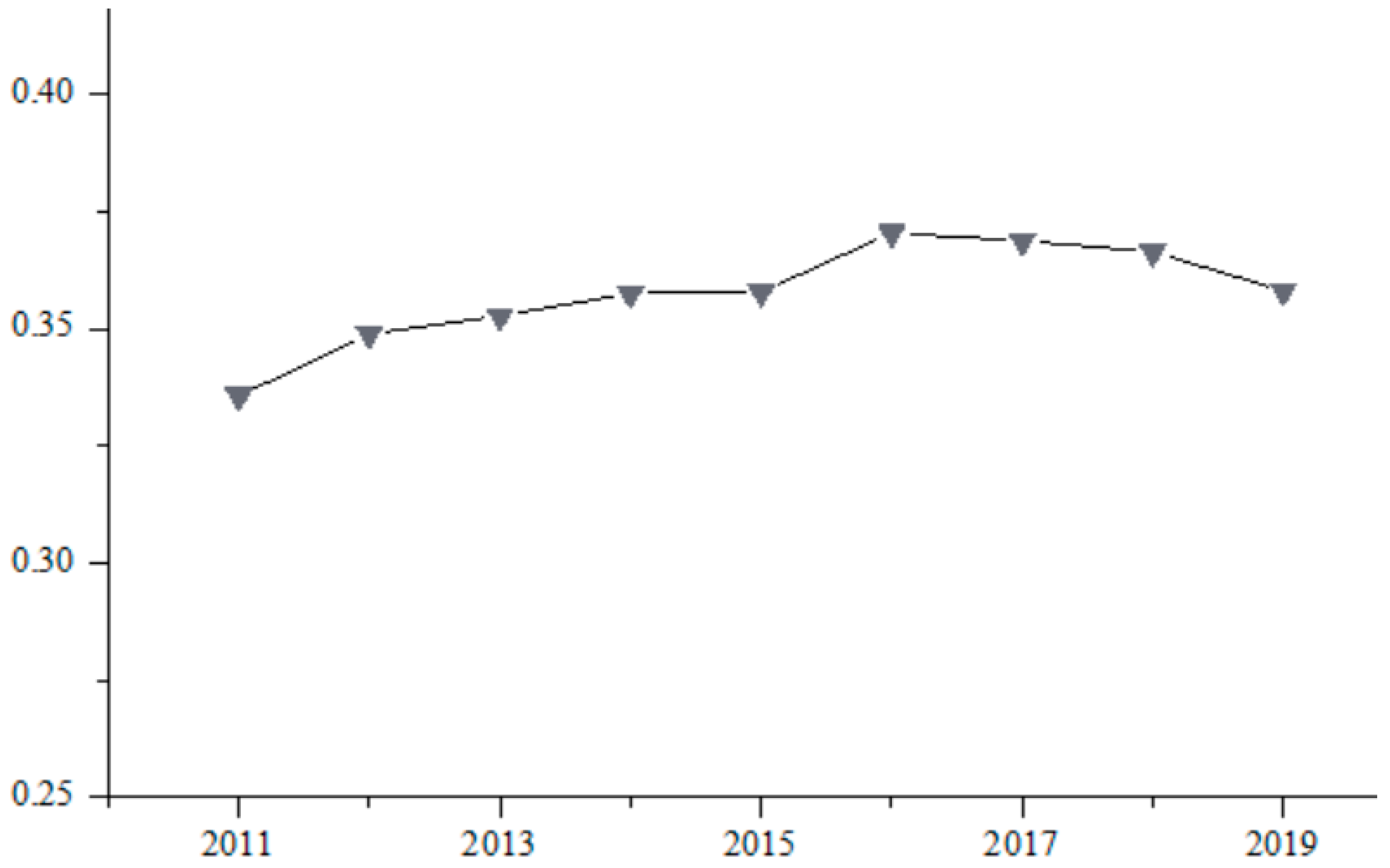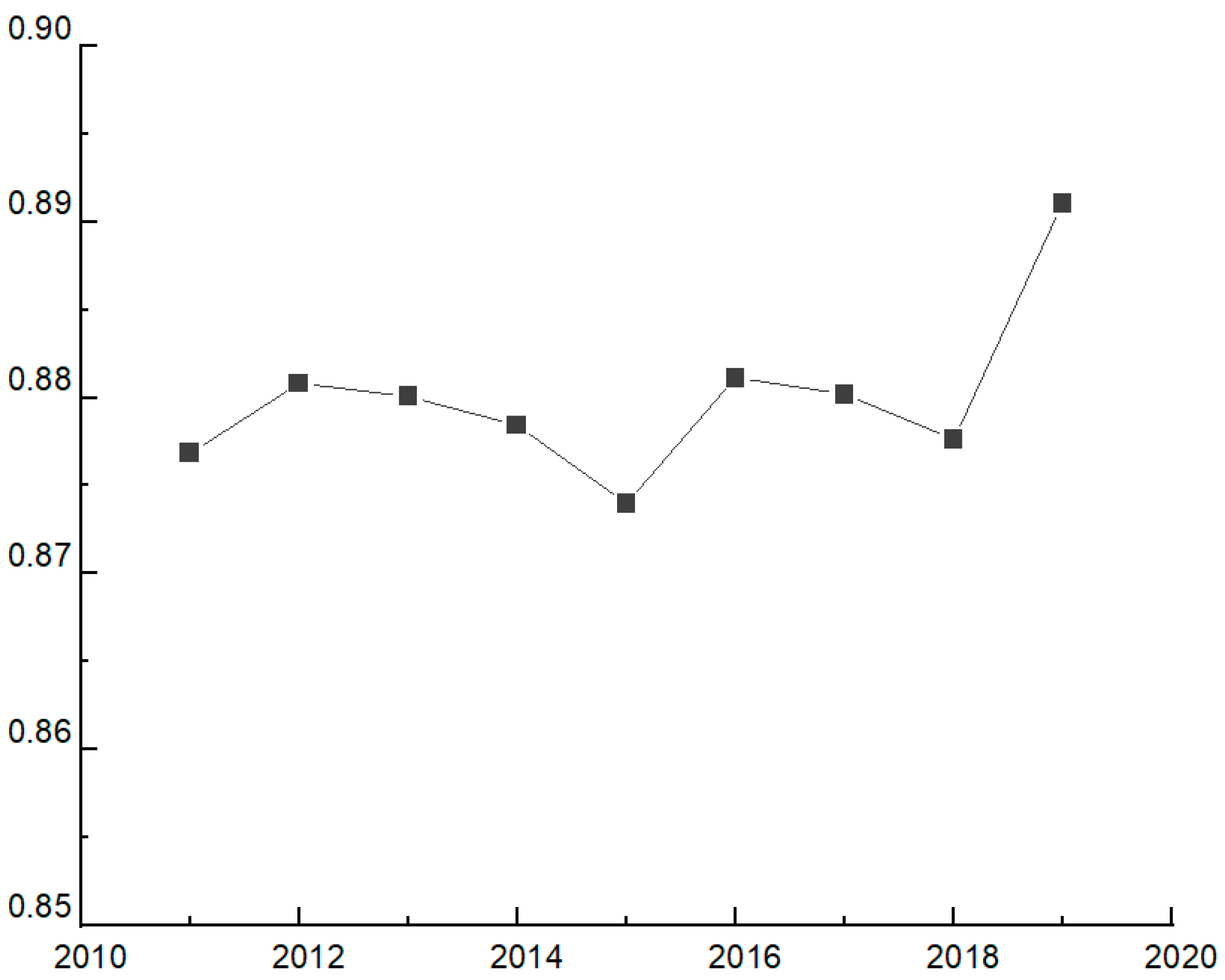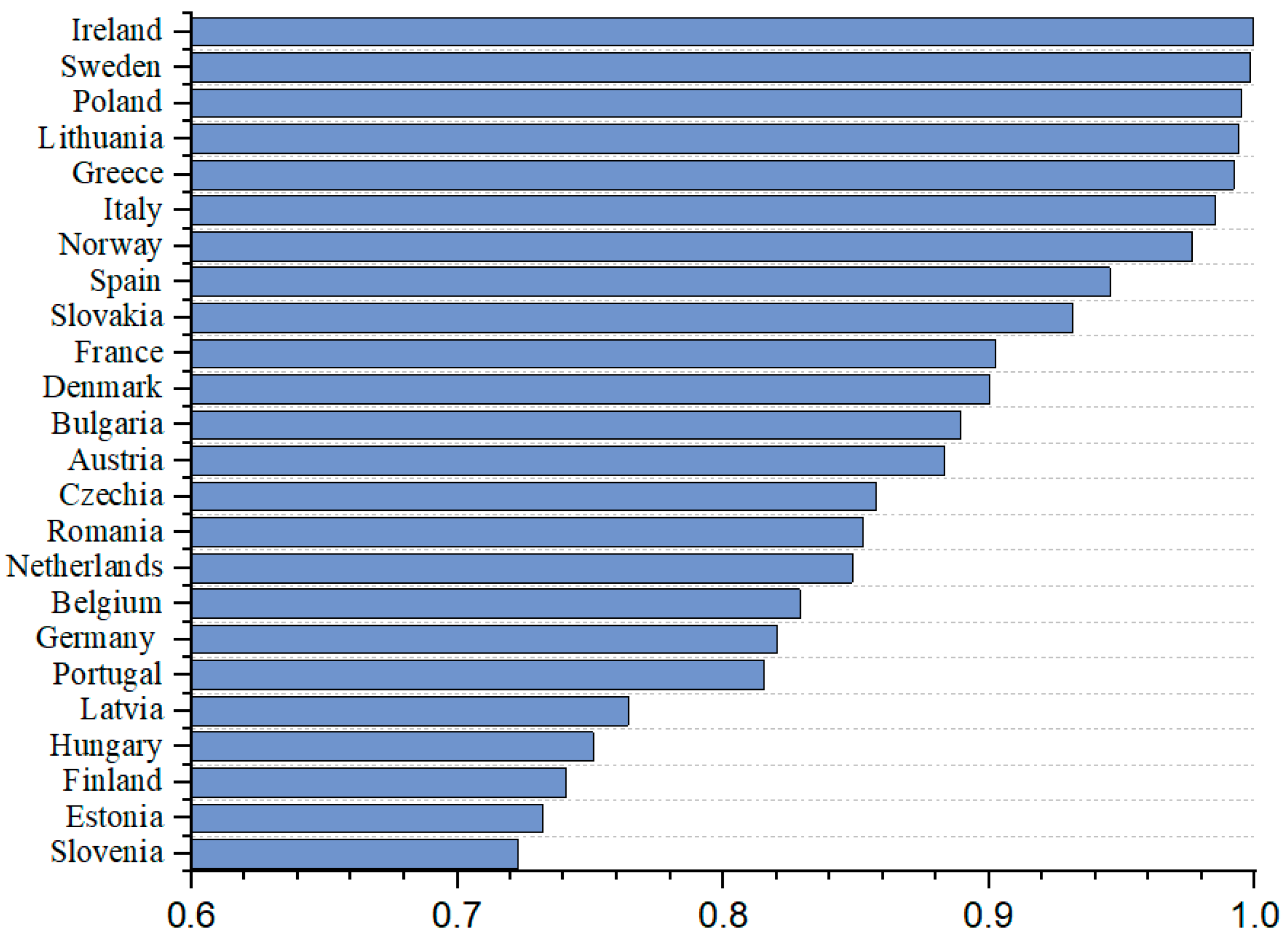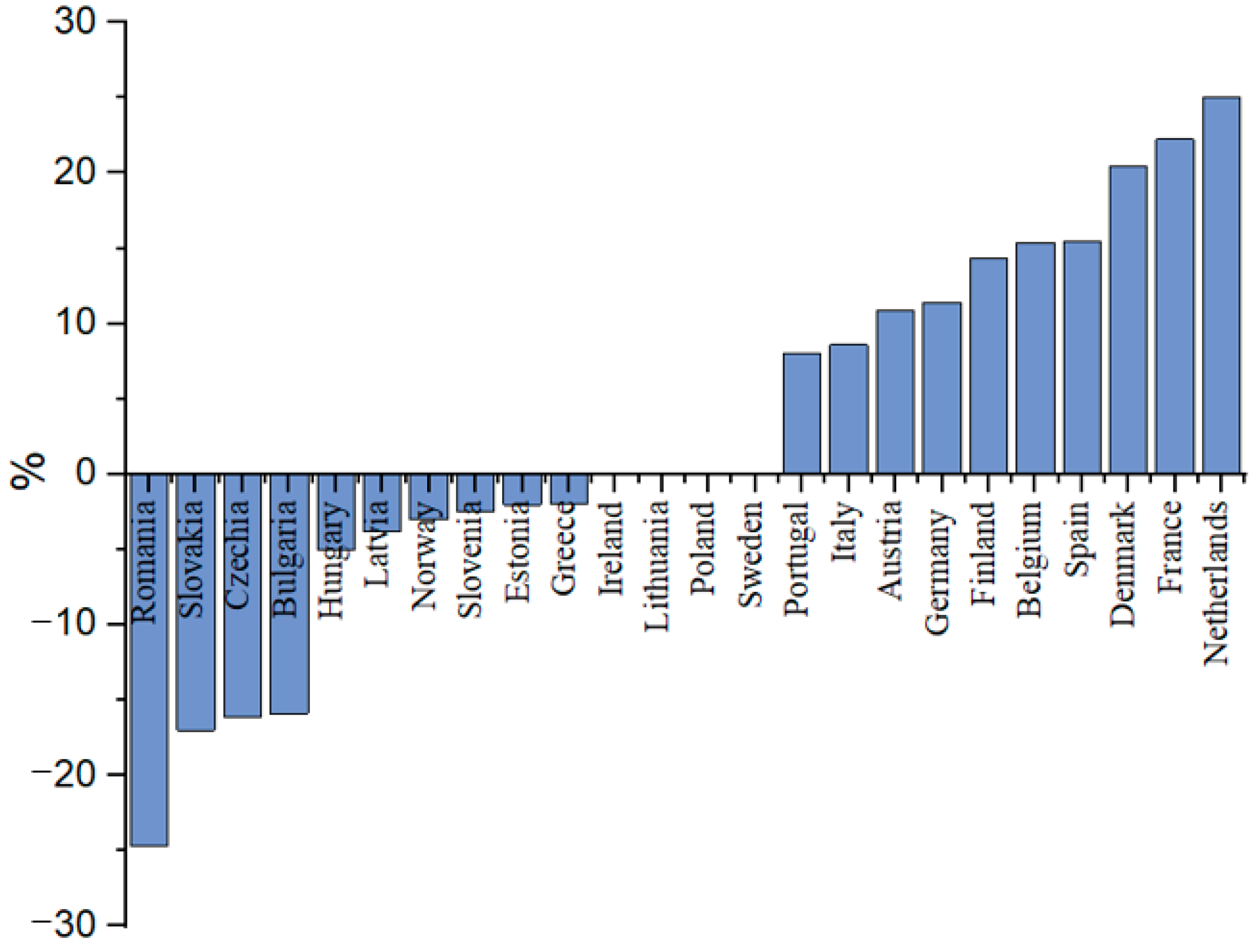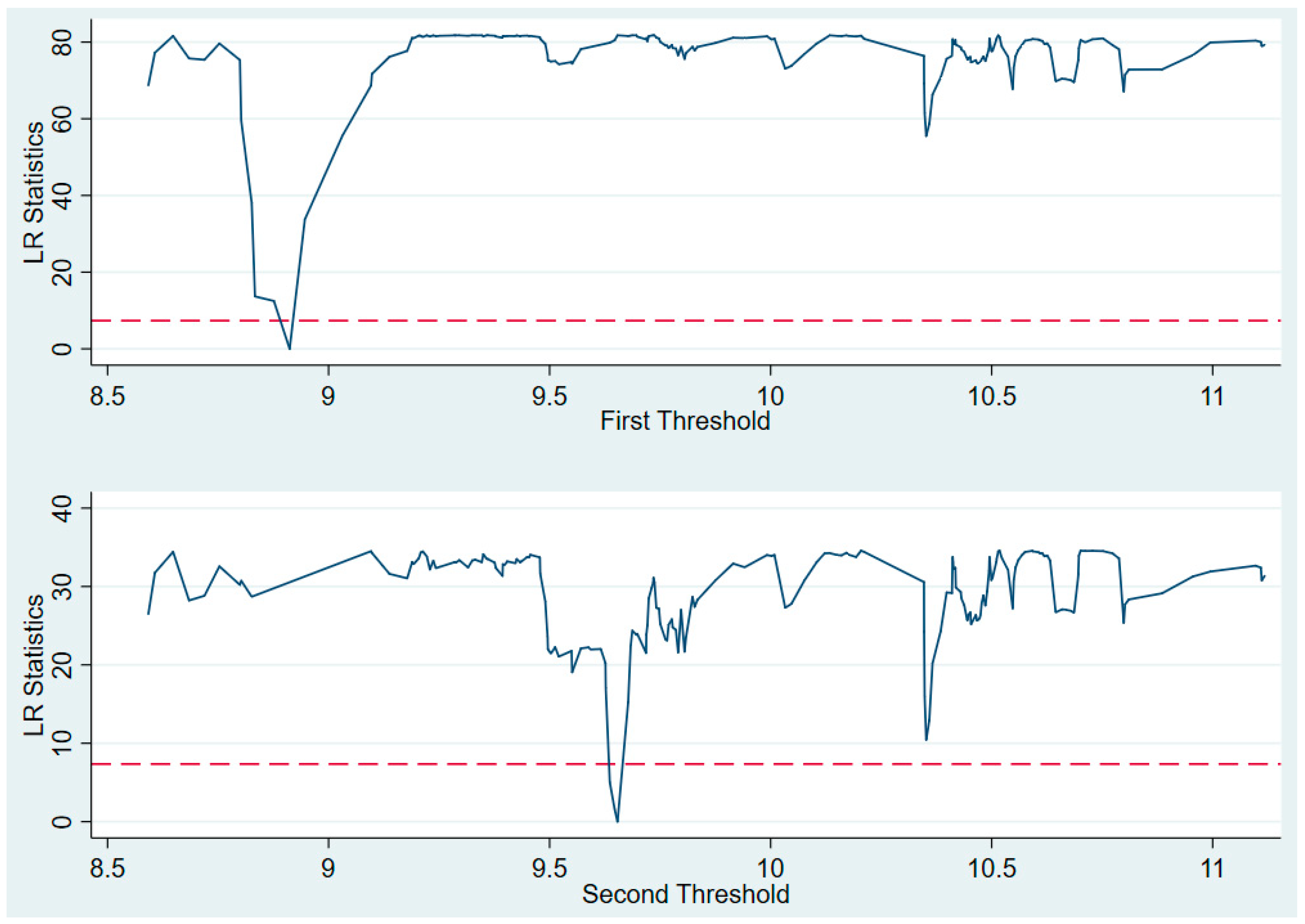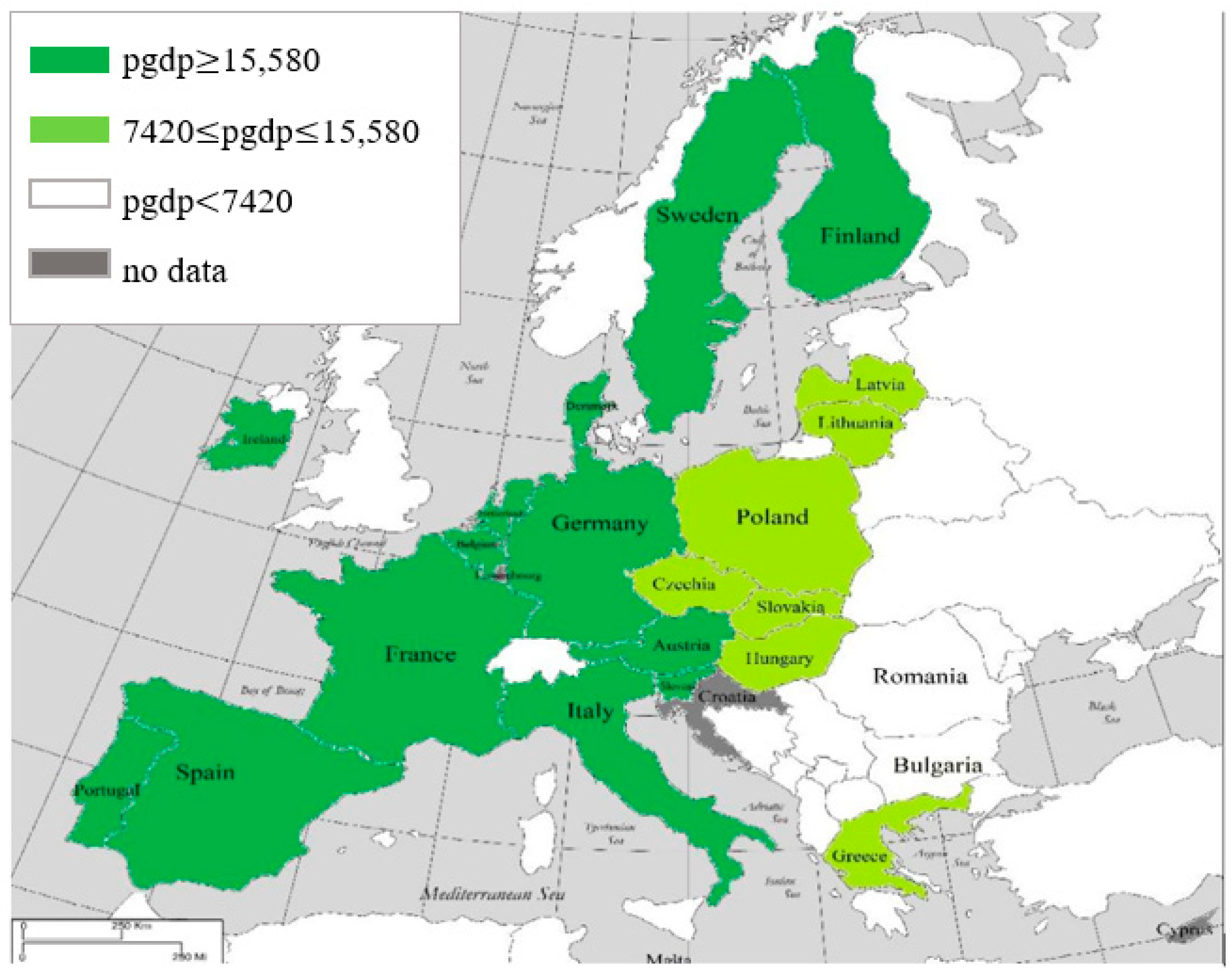1. Introduction
Sustainability is a multidisciplinary topic and should cover all countries, without exception [
1]. The combination of global resource scarcity, climate change, and increasing resource consumption has made the challenge of sustainable development (SD) a major priority [
2]. The topic of SD has become ubiquitous in the last 30 years, yet how to achieve such a goal, or whether it is even possible, remains a major unknown [
3]. In modern economies, people consider energy efficiency and pollution emission reduction as being critical to their sustainable expansion [
4]. A definition for SD was first proposed in the Brundtland Report in 1987: “Development that meets the needs of the present without compromising the ability of future generations to meet their own needs” [
5]. The report highlights the importance of the balance between environmental protection, social development, and the economy of human activities.
The United Nations (UN) has played a key role in promoting sustainable development because it is constantly working to assist countries to overcome current and future sustainability challenges. In 2012, the UN Conference on Sustainable Development (UNCSD) focused on the role of the green economy in sustainable development and poverty eradication. In 2015, the United Nations (UN) General Assembly adopted 17 Sustainable Development Goals (SDGs) as an integral part of the 2030 Agenda for Sustainable Development, serving as a continuation of the Millennium Development Goals (MDGs). The SDGs mark the UN’s historic shift towards a single sustainable development agenda, following a long history of trying to integrate economic and social development with environmental sustainability [
6].
Global goals such as the SDGs are believed to create a common vision and incentive for more cooperation among international organizations and institutions, and hence improve policy coherence [
7]. To achieve the SDGs adopted by the UN in 2015, the European Commission (EC) has focused on concrete actions to bring about “tangible progress” on the SDGs. In 2019, the EC proposed a “European Green Deal” to make the EU economy more sustainable by turning climate and environmental challenges into opportunities. In July 2022, the EC delivered the Green Recovery Plans (GRPs), aimed at fostering a greener, more digital, more resilient Europe that provides a better fit for the current and forthcoming challenges [
8]. In this context, dealing with the coordinated development of the economy, resources, and the environment has become an urgent priority for EU countries. With the expanding research on the dual system of “Energy-Economic”, “Energy-Environmental”, and “Economic–Environmental”, scholars have realized that a more comprehensive, in-depth, and systematic study can only be carried out if the “Energy-Economy-Environment” system is considered simultaneously. Therefore, the 3E efficiency measurement, based on the “Energy–Environmental–Economic” (3E) system, can investigate the coordination relationship among these three factors from the perspective of energy conservation and emission reduction.
The digital economy has developed rapidly in recent years. Supported by the development of big data, 5G technology, cloud computing, and artificial intelligence, all countries in the world regard the digital economy as strategically important and as a new driving force for economic growth in the reconstruction of national core competitiveness. The digital economy originated in the 1990s—it was first proposed by Don [
9], who elaborated on the impact of the Internet on the economy and society—and is now becoming an emerging economic system. The EU is one of the most developed regions in the world, and also a region that has had an early start in the digital economy. As a representative advocate of the digital economy, the EU has introduced many policies in recent years to promote its development and address its challenges. Since 2010, the EU has promoted “Digital Europe” and sent out a strong message on the need for a stronger and more coherent Digital Europe through annual events, such as the Tallinn Digital Summit. Over the past decade, the EU has adopted many policy documents related to digitization of the EU economy, such as “A Digital Agenda for Europe” [
10], “Age of Artificial Intelligence: Towards a European Strategy for Human-Centric Machines” [
11], and “Towards a Thriving Data-Driven Economy” [
12].
Data elements/factors, as the core driving force of the digital economy, exist in the form of virtual non-physical entities, with the environmentally friendly characteristics of low natural resource consumption and low pollution emission. In participating in economic activities, data elements/factors break with the traditional high-energy-consuming and high-pollution approach to economic growth, effectively embodying the concept of green development. This also coincides with the concept of using less cost to create greater output in efficiency measurements.
In terms of the digital economy and economic growth, most scholars have recognized the positive effect of the digital economy on economic development, which promotes economic growth by creating job opportunities and changing social structures [
13,
14]. The promotion of the digital economy will gradually impact on the environment. Under the restrictions of global climate change, more and more digital technologies are being applied in the fields of energy and environment. With the rapid development of Internet technology, some scholars have begun to incorporate the digital economy into the research framework of green and low-carbon development, mainly focusing on the relationship between the digital economy and energy efficiency, carbon emission, circular economy [
4,
15,
16,
17], but their views have not reached a consensus. In terms of the digital economy and energy efficiency, some scholars believed that the development of the digital economy will lead to the increase of energy efficiency [
18,
19,
20,
21,
22], and they still have some different views, arguing that the application of digital technologies and the construction of digital infrastructures stimulate a surge in energy demand [
23,
24]. In terms of the digital economy and carbon emission, there also exist different views. On one hand, some scholars believed that developing the digital economy is beneficial to reducing carbon emissions [
9,
25,
26,
27,
28], the digital economy will drive the realization path of carbon emission reduction, which, in turn, leads to a reduction in carbon emissions. On the other hand, others indicated that the developing digital economy exacerbates carbon emissions [
29,
30,
31,
32,
33,
34].
However, there remains a gap in the current research on the relationship between the digital economy and 3E efficiency. The development of the digital economy is an effective approach to promote economic growth, relieve pressure on the environment, and improve 3E efficiency. Therefore, inspired by the intrinsic connection between 3E efficiency and digital economy, we attempt to carry out an empirical analysis on what impact the digital economy has on 3E efficiency, and discuss how this can help to improve the environment through high-quality economic development. The purpose of this paper is to examine the relationship between the digital economy and 3E efficiency in EU countries, including direct and indirect impacts.
The contribution of this paper are as follows: (1) It sets out the construction of a digital economy variable system and measures the level of national digital economic development in EU countries using the entropy method. (2) Most current studies on the digital economy and green economy are focused on carbon emissions and energy efficiency. This paper is the first to focus on the relationship between the digital economy and 3E efficiency, which reinforces the internal requirements of sustainable development. (3) In addition, we take account of the indirect impact of the digital economy on 3E from the perspective of economic growth and explore the mediating role of economic growth. The remainder of this paper is organized as follows:
Section 2 presents the Methodology and models used in this study;
Section 3 introduces the variable system used for empirical estimation;
Section 4 provides the results and discussions; and
Section 5 offers some concluding remarks.
5. Conclusions
This study examines the relationship between the digital economy and 3E efficiency. It is assumed that the digital economy affects 3E efficiency directly and indirectly (via economic growth). In order to verify this hypothesis, an empirical analysis on the relationship between the digital economy, economic growth, and 3E efficiency is conducted, using panel data for 24 EU countries for the years from 2011 to 2019. Each country’s 3E efficiency and digital economy development level is measured by using a complete 3E efficiency variable system and a digital economy variable system. The main findings are as follows.
Firstly, EU countries have paid more attention to the sustainable development of the “Energy–Environmental–Economic” system. Therefore, we used the SBM model with undesirable output to measure the 3E efficiency of EU countries. The efficiency score for each country has been estimated by taking economy, environment, and energy into account. Overall, the 3E efficiency of the EU showed an upward trend from 2011 to 2019. Among EU countries, Ireland, Sweden, Poland, Greece, and Italy have achieved the highest 3E efficiency.
Secondly, the digital economy development level of EU countries is measured by using an entropy method with a digital economy development variable system. The digital economy level of EU countries is on the rise, and countries with a high level of digital economy are Germany, the Netherlands, Sweden, Finland, France, Denmark, and Ireland.
Finally, the relationships between digital economy, economic growth, and 3E efficiency are examined by using panel regression, the intermediary effect model, and the threshold model. In terms of the influencing factors, energy consumption structure (es), environmental protection investment (epi), and the level of urbanization (ur) can improve 3E efficiency. The level of government intervention impedes the improvement of 3E efficiency to a certain extent. In addition, digital economy has direct and indirect (through economic growth) influences on 3E efficiency. When GDP per capita exceeds EUR 15,580, the coefficient at this point changes from negative to positive, indicating that with the development of economy, the digital economy development level is conducive to the improvement of 3E efficiency after GDP per capita exceeds a threshold.
Based on the findings above, this implies that EU countries should adopt different strategies in order to attain a balance between economic growth and sustainable development. Those in Central and Western Europe are positioned favorably for digital economy development and therefore can take advantage of the improving 3E efficiency that comes with it. On the other hand, some countries in Eastern Europe may find that developing their digital economies will not necessarily yield better 3E efficiency. Consequently, they should focus on maintaining a delicate balance between both digital economy development and 3E efficiency, while striving towards a sustainable development model that works best for them.
In addition, there is still some limitations of this paper. The scope of this study is limited to EU countries due to the availability and consistency of data. Therefore, it is unclear whether the findings of this study would apply to other countries or regions. In future studies, we can further expand the scope of our research, selecting more regions with different performances in energy, economic, and environmental aspects to explore the difference in the impact of the development level of the digital economy on 3E efficiency in different countries and regions.
